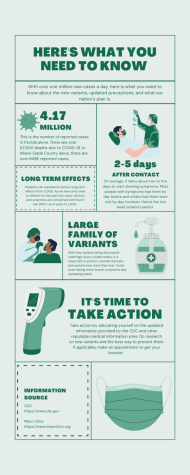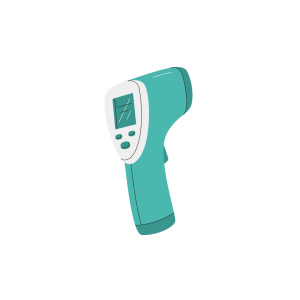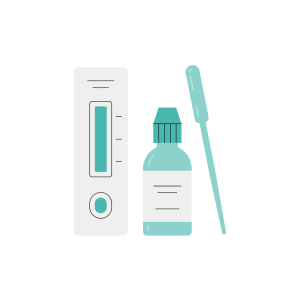New Year, New Variant
With over one million new cases a day, here is what you need to know about the new variants, updated precautions, and what our nation’s plan is.
January 4, 2022

What is Omicron?
Omicron is a South African variant of SARS-CoV-2. As of the end of December, Omicron has been detected and is spreading in most states and territories. It has been rapidly increasing the number and severity of reported cases. The Omicron variant spreads more easily than the original virus, it has been reported to have more intense symptoms for those infected.

According to the CDC, “With other variants, like Delta, vaccines have remained effective at preventing severe illness, hospitalizations, and death. The recent emergence of Omicron further emphasizes the importance of vaccination and boosters.”
If someone is not vaccinated already, it is important to research it to decide if they are a suitable candidate in order to protect yourself and others from the spread. The vaccine is recommended for those five years and older. If already vaccinated, the booster is readily available for those above 18 and provides an added protection. Scientists are still investigating the current treatments in order to see how well they remain ineffective or effective when put against the changed genetic code of the Omicron variant.
COVID-Flu, Introducing “Flurona”
The first case of a mix of COVID-19 and the flu has been reported in Israel. The patient recovered, however the rise in flu cases calls for concern for pregnant women. Last year, there were less reports of the flu for pregnant or birthing women, however there are increasing cases of both COVID and the flu as of late. Having influenza and coronavirus at the same time breaks down the body’s immunity which can further develop both viruses’ symptoms of shortness of breath affecting the respiratory system. Because the viruses spread in similar ways, you should take the same precautions such as social distancing and masks. When combined, the flu and COVID can destroy the body which could lead to other diseases such as pneumonia, acute respiratory distress syndrome, organ failure, and even death. Doctors and scientists alike recommend vaccinations for the flu and coronavirus in order to prevent “Flurona.”
Rapid Tests 
At-home rapid tests have been used heavily throughout the pandemic, but now there are concerns regarding the access, efficiency, and rising costs of the options available to consumers. The downside is that they do sacrifice some accuracy in exchange for faster results. The more accurate tests are PCR tests, which take at least 24 hours most of the time to get your results back. The rapid tests are more accurate when a person has symptoms as it takes more of the virus for a rapid test to be positive than with a PCR test. However, it’s important to continue testing if you have symptoms or have been exposed as you can initially test negative and then end up testing positive. The Biden administration has worked to increase production of rapid testing kits by investing $3 billion. They also provided 50 million rapid tests to community health centers and plan to distribute 500 million more free tests starting in February.
